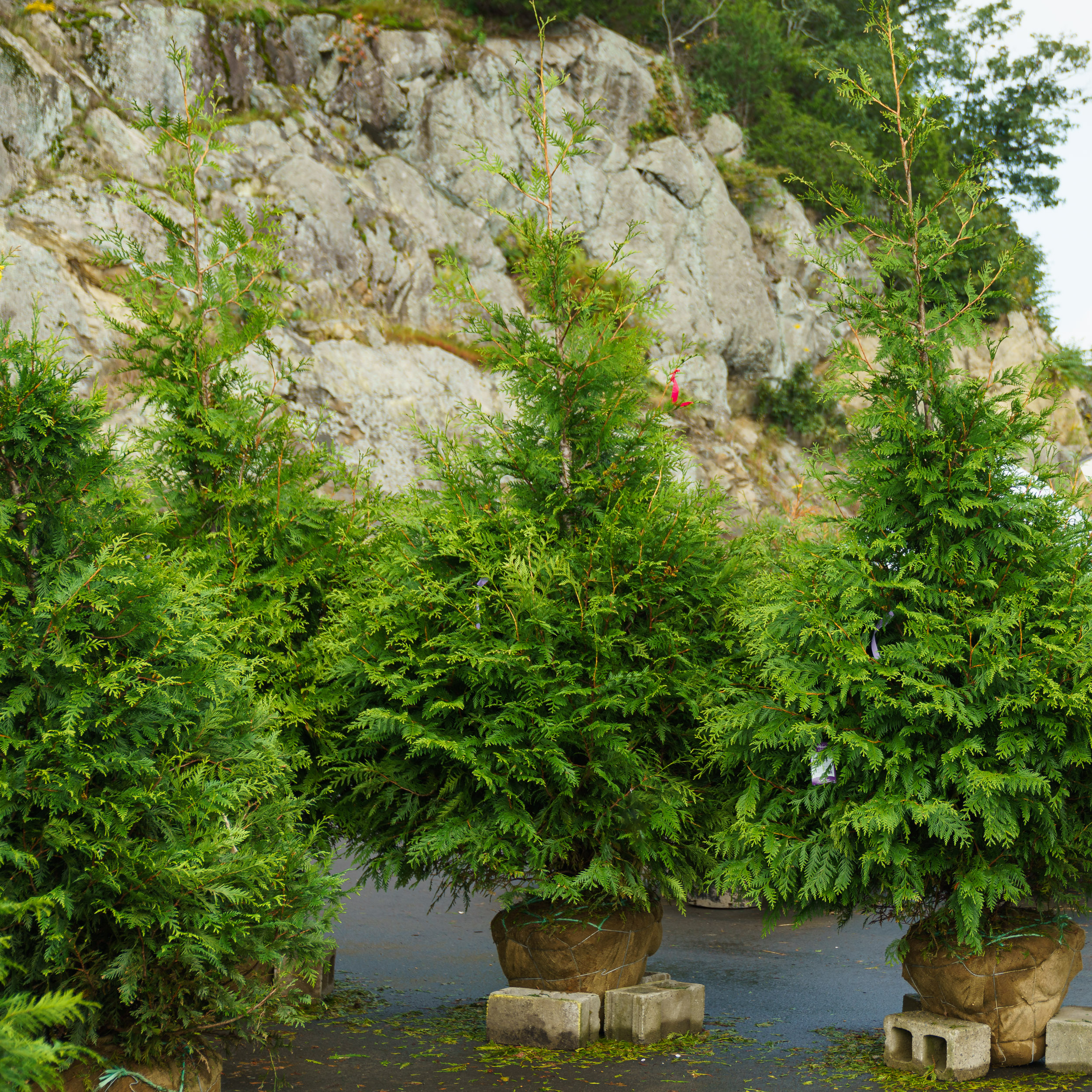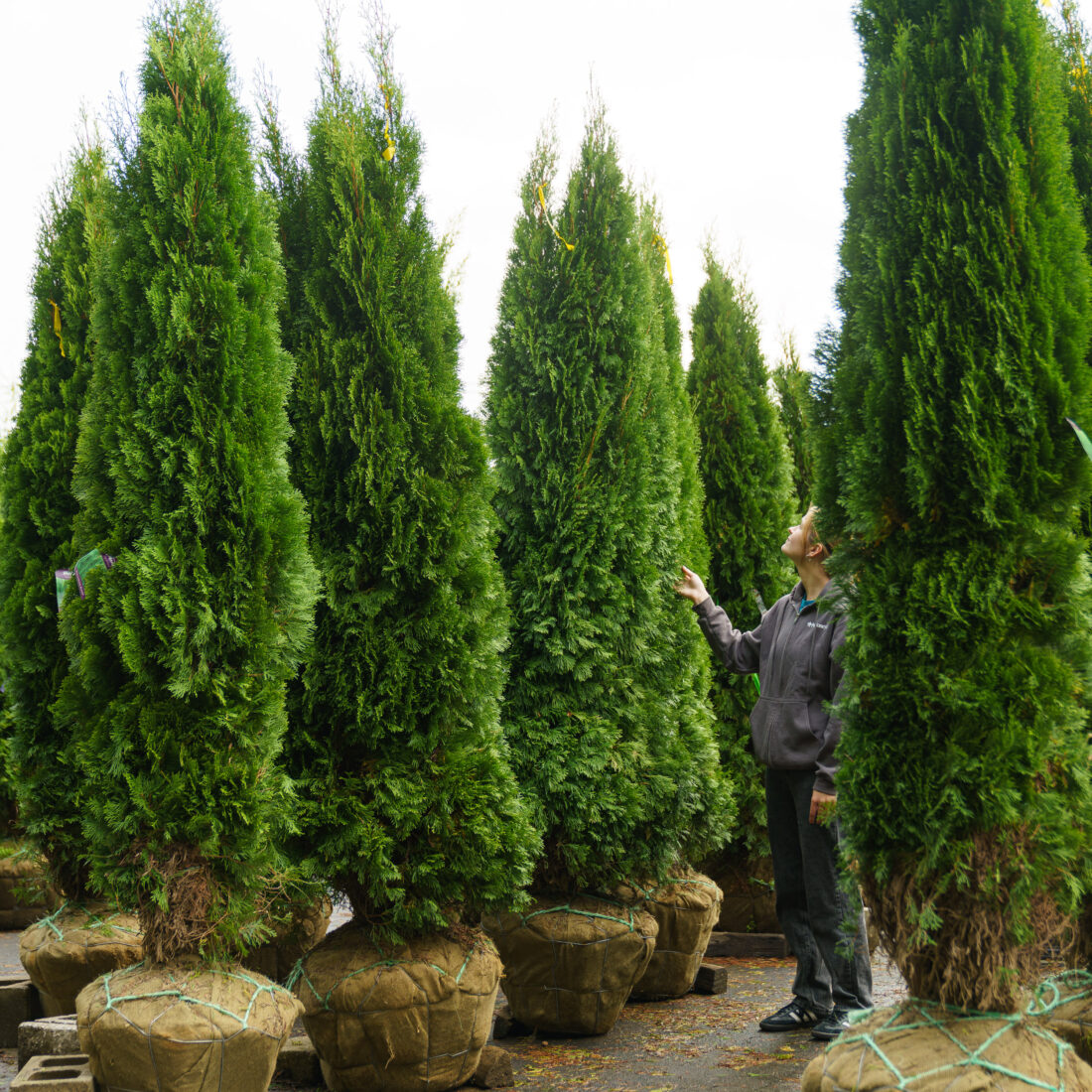September 20, 2024
Green Giants of New England: Caring for Arborvitae and Western Red Cedar
If you’re looking to add some green charm to your New England garden, Arborvitae and Western Red Cedar is a great choice! These evergreen trees and shrubs not only add year-round beauty but also privacy and character to your landscape. In this guide, we’ll explore everything you need to know about caring for these popular plants in New England.
Choosing the Right Variety
Before you dive into planting Arborvitae or Western Red Cedar, it’s essential to choose the right variety that suits your landscape and environmental conditions. Consider factors like light requirements, mature size, foliage color, and growth rate.
For Full Sun to Light Shade: American Arborvitae (Thuja occidentalis)
- Emerald Green (‘Smaragd’)
- Dark American (‘Nigra’)
- Degroot’s Spire
- American Pillar
- Golden Globe
For Full Sun to Shade: Western Red Cedar (Thuja plicata)
- Green Giant
- Steeplechase
- Whipcord
- Forever Goldy

Western Red Cedars at Mahoney’s in Winchester
Planting Tips
Follow these guidelines for successful Arborvitae and Western Red Cedar transplantation:
Soil Requirements: Ensure your soil drains well. Amend heavy clay soils with organic matter and gypsum. These plants have broad root systems, so dig a hole at least twice as wide as the root ball to encourage root spread.
Care in the First Two Years: Pay special attention during the first two years after planting. Adequate watering, especially during dry spells, is critical.
Fertilizing: Apply all-purpose slow-release fertilizer in early spring before new growth fully emerges. Fall fertilizing at half the spring amount helps establish healthy root systems.
Pruning: Arborvitae typically don’t require much pruning, but if needed, shear the outermost growth in late spring to shape or manage size. Start early to avoid overgrowth.
For a handy, printable version of this information, check out our Arborvitae and Western Red Cedar care guide!
Printable Care Guide
You can also watch our Proper Planting video with Patrick on the basics of planting a tree or shrub!
Common Problems and Solutions
Heat Stress: Hot, dry weather can induce heat stress and invite spider mite infestations. Ensure regular, deep watering to boost plant vigor and natural defenses.
Bagworm Moths: While not typically destructive, bagworms can cause unsightly defoliation. Hand removal is often sufficient or use organic pesticides like Neem Oil for larger infestations.
Deer Damage: In areas with high deer populations, consider planting Western Red Cedar (Thuja plicata) as it’s less favored by deer compared to Eastern Arborvitae (Thuja occidentalis).
Seasonal Needle Drop
Don’t panic if your Arborvitae turns brown inside during fall; it’s a natural process called seasonal needle drop. Fresh growth in spring will fill in any gaps left by this process.
Fall Watering
Keep your Arborvitae and other evergreens well-hydrated in autumn, as it prepares them for the harsh winter conditions common in New England. Water regularly from September through early December to reduce winter stress. For more information on establishment watering for newly planted trees, see our printable Planting Guide.
Varieties
Here are some popular Arborvitae cultivars carried at Mahoney’s Garden Centers:
American Arborvitae (Thuja occidentalis)
- Emerald Green ‘Smaragd’
- Dark American ‘Nigra’
- Degroot’s Spire
- American Pillar
- Golden Globe
Western Red Cedar (Thuja plicata)
- Green Giant
- Steeplechase
- Whipcord
- Forever Goldy
Please note that actual plant characteristics may vary depending on soil, sunlight, and water conditions.
Incorporating Arborvitae and Western Red Cedar into your New England or Boston garden can be a delightful addition, providing year-round beauty, privacy, and resilience. These versatile plants, with proper care and maintenance, will thrive in your outdoor space, enhancing its charm for years to come.
Shop a wide selection of Arborvitae and Wester Red Cedar in-store and select varieties online.
Shop Online

